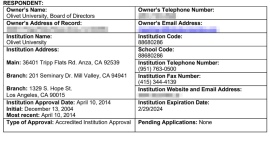
An author shared that for one to be a transformational leader, he has to lead using the "relactional" approach.
Leadership strategist, keynote speaker and author Ford Taylor said that "relactional leadership," which he coined from the words "relational and transactional," is the key to making a workforce more productive.
"It is important to lead both relationally and transactionally, and that's why we call it relactional leadership. As you model this relactional approach, the people in your organization-and we think an organization can be as few as only two people or it can be many people-will become happier and more productive as a result. They cultivate organizations in which the people get along well and get the job done well," he explained on Charisma Magazine.
Taylor is the author of the book, "Relactional Leadership: When Relationships Collide with Transactions." He is also a leadership strategist, speaker and the founder of FSH Strategy Consultants, an organization that promotes the movement of transformational leadership.
According to the Santa Fe Center for Transformational School Leadership, the term "transformational leadership" was first used by James MacGregor Burns in 1978, describing a process wherein "leaders and followers help each other to advance to a higher level of morale and motivation."
Taylor said that workers in an organization are composed of two kinds - relational or individuals who are people-oriented and transactional or employees who are task-oriented.
He said that these contrasting characteristics between employees can cause tension.
For workers who are highly relational, the author pointed out that though completing a task plays a certain level of importance, relationship is the most vital part in all their undertakings. People are their priority and bad relationships make it difficult for them to focus on tasks.
On the other hand, highly transactional employees are heavily concentrated on addressing the completion of tasks, rather than giving more importance to relationships. For this group of workers, not completing a transaction results to having difficulty in focusing on relationships.
Taylor said that leading these diverse types of people is already challenging, but adding to the equation is the leader's default style of leadership, which is necessary for both the leader and the organization to perform at a high level. Thus, the strategist offered a way to reconcile these differences - teaching each other's strength.
He pushed for highly relational people to be given tools so that they would be more transactional, while the highly transactional people should also be equipped to be more relational, without having to dismiss each group's own "natural inclination."
"That's what we call relactional leadership. As a transformational leader, one of your primary jobs is, first, to model this kind of relactional leadership and then to provide this 'tool' to your people so they can both get along well together and also get the job done well," Taylor further stressed.
In conclusion, the author emphasized that regardless of people's personalities, all workers are relevant due to their contributions to the organization.
"And here's the secret of relactional leadership: Relactional leaders are people whose relationships are so strong that no transaction can cause them to be broken," Taylor added.





















